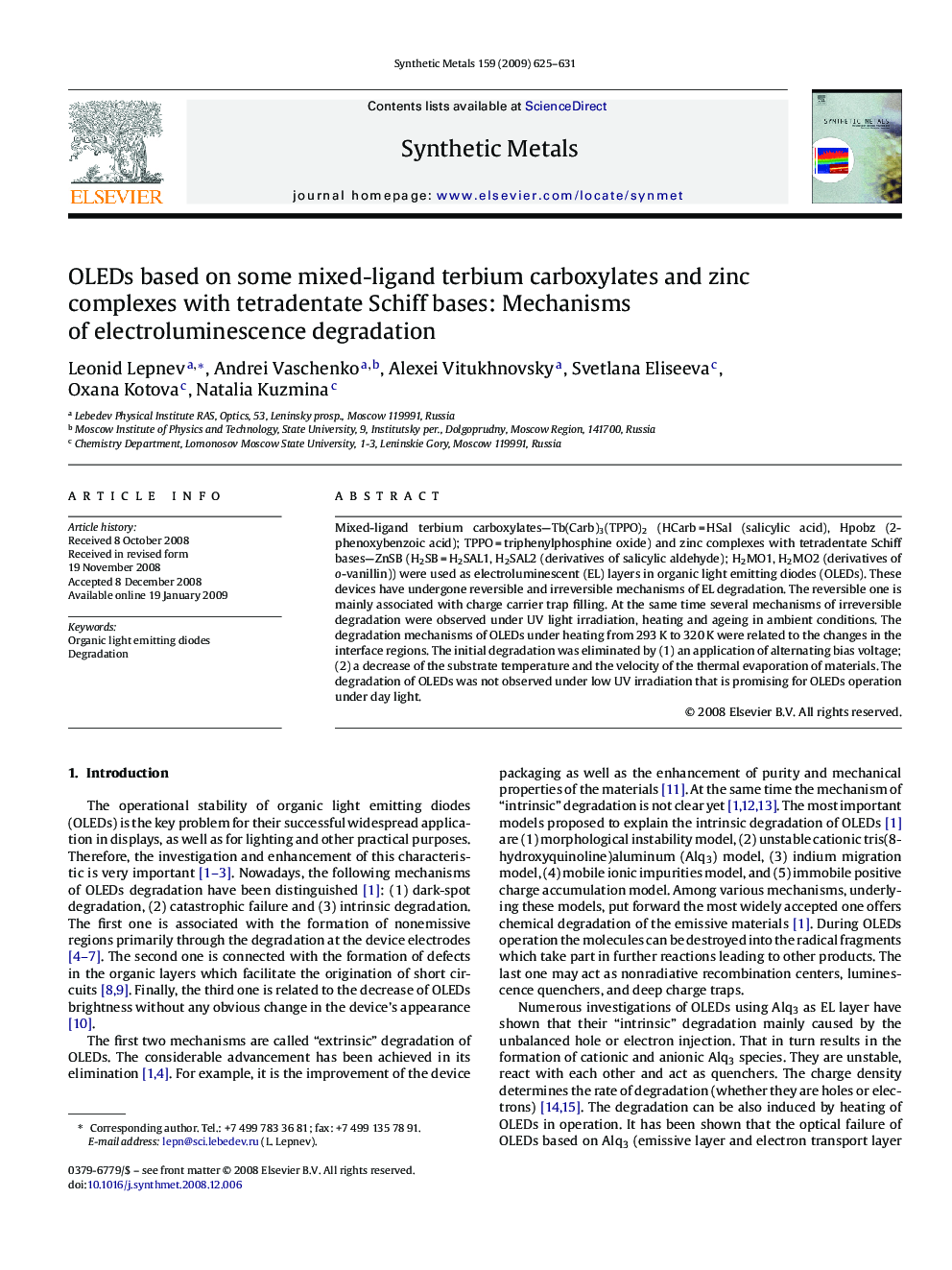| Article ID | Journal | Published Year | Pages | File Type |
|---|---|---|---|---|
| 1443379 | Synthetic Metals | 2009 | 7 Pages |
Mixed-ligand terbium carboxylates—Tb(Carb)3(TPPO)2 (HCarb = HSal (salicylic acid), Hpobz (2-phenoxybenzoic acid); TPPO = triphenylphosphine oxide) and zinc complexes with tetradentate Schiff bases—ZnSB (H2SB = H2SAL1, H2SAL2 (derivatives of salicylic aldehyde); H2MO1, H2MO2 (derivatives of o-vanillin)) were used as electroluminescent (EL) layers in organic light emitting diodes (OLEDs). These devices have undergone reversible and irreversible mechanisms of EL degradation. The reversible one is mainly associated with charge carrier trap filling. At the same time several mechanisms of irreversible degradation were observed under UV light irradiation, heating and ageing in ambient conditions. The degradation mechanisms of OLEDs under heating from 293 K to 320 K were related to the changes in the interface regions. The initial degradation was eliminated by (1) an application of alternating bias voltage; (2) a decrease of the substrate temperature and the velocity of the thermal evaporation of materials. The degradation of OLEDs was not observed under low UV irradiation that is promising for OLEDs operation under day light.
